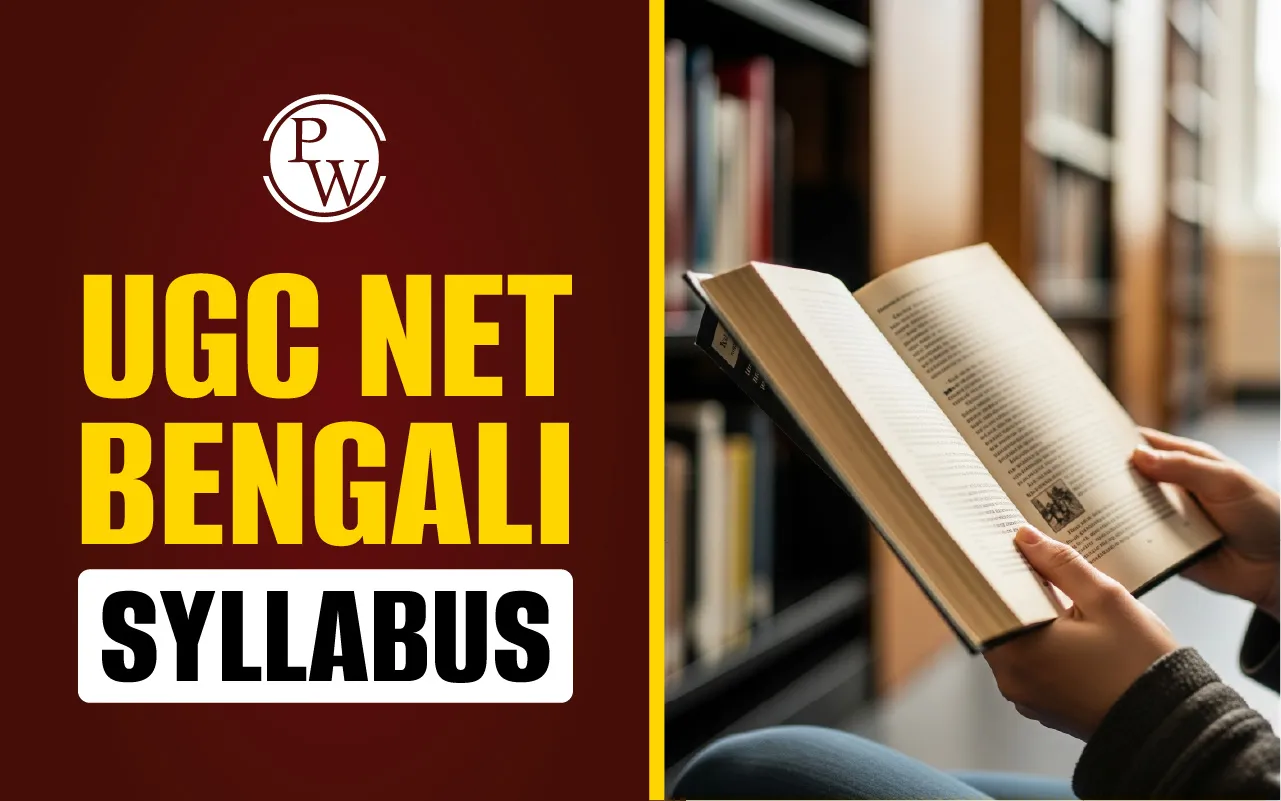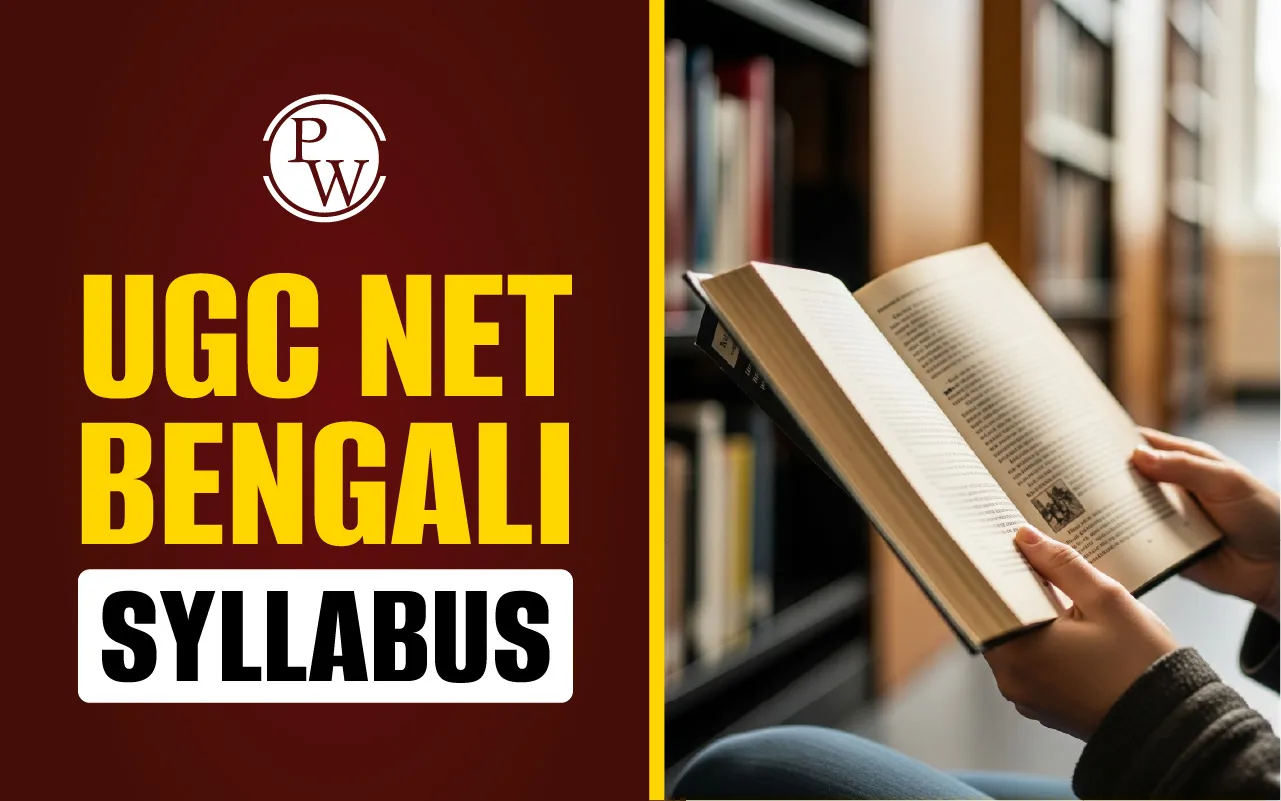

UGC NET Bengali Syllabus can be a useful asset for exam preparation. Candidates preparing for the UGC NET Bengali Exam must refer to the latest Bengali Syllabus PDF for strong exam preparation. The syllabus includes the essential topics to be covered and helps aspirants streamline their preparation. Aspirants can obtain the UGC NET Bengali Syllabus PDF file from the official website for a right understanding of the topics covered in the question paper.
The UGC NET Bengali Exam is conducted by the National Testing Agency (NTA) to determine the eligibility of candidates for Assistant Professor and Junior Research Fellowship (JRF) in Indian universities. Here, candidates can learn important insights about the syllabus, exam pattern, and preparation tips.
UGC NET Bengali Syllabus 2025 Overview
Referring to the UGC NET Bengali Syllabus is essential for success in the exam. Paper I contains the general topics like reasoning, teaching aptitude, quantitative aptitude, and other similar topics. Further, paper II of the Bengali exam contains subject-oriented topics only. It provides the unit-wise structure of topics that will be covered in Paper II of the Bengali subject.
Learning specific topics such as classical poetry, modern prose, grammar, literary criticism, and the history of Bengali literature can help candidates to secure more marks in the examination. Candidates can refer to the latest available UGC NET Bengali Syllabus PDF to be aware of the right topics that might appear in the actual examination paper. Candidates can go through the following table to learn about the UGC NET Bengali Syllabus details:
| UGC NET Bengali Syllabus Overview | |
|---|---|
| Exam Name | UGC NET |
| Conducting Body | National Testing Agency (NTA) |
| Exam Purpose | JRF and Assistant Professor Eligibility |
| Exam Level | National |
| Paper Covered | Paper I (General) and Paper II (Bengali Subject) |
| Mode of Exam | Computer-Based Test (CBT) |
| Duration | 3 Hours (180 minutes) |
| Medium of Paper | Bengali and English (Bilingual) |
| Syllabus Coverage | Paper I – Teaching/Research Aptitude & Reasoning; Paper II – Bengali Language, Literature & Criticism |
| Total Units in Paper II | 10 Major Units (Language Development, Classical & Modern Literature, Poetry, Novels, Drama, Rabindra Sahitya, Prosody, Poetics, etc.) |
| Key Topics | Charyapada, Vaishnava Padavali, Madhusudan Dutta’s works, Rabindra Sahitya, Bankim Chandra’s novels, Bengali Prosody, Indian & Western Poetics |
| Total Questions | 150 (50 in Paper I and 100 in Paper II) |
| Official Website | ugcnet.nta.ac.in |
Note: It is recommended for the candidates to visit the official web portal of the UGC NET NTA to learn about any updates in the official latest UGC NET Bengali Syllabus PDF when it is released.
UGC NET Bengali Syllabus 2025 PDF Download (Official Link)
Candidates can download the UGC NET Bengali Syllabus PDF from the official NTA UGC NET website. It includes a detailed list of units and subtopics that may be asked in the Bengali Paper II. Applicants must carefully study all the important topics from there. Here is the download link to obtain the UGC NET Bengali Syllabus PDF:
UGC NET Bengali Syllabus 2025 – Paper 1 & Paper 2 Details
UGC NET applicants must be aware that there are two sections in the UGC NET Bengali exam. Paper I in the Bengali exam contains questions related to teaching aptitude, mathematical reasoning, logical reasoning, and other related topics. Such topics are common to each paper conducted by UGC NET NTA.
Further, students must focus on the paper II topics more to obtain high marks in the UGC NET Bengali paper. Paper II subjects are topics related to core Bengali concepts. Below are the main units covered under the UGC NET Bengali Paper II Syllabus:
Paper 1 – General Teaching & Research Aptitude (Common for All Subjects)
Focuses on teaching and research aptitude, including:
-
Teaching Aptitude
-
Research Aptitude
-
Comprehension
-
Communication
-
Mathematical Reasoning and Aptitude
-
Logical Reasoning
-
Data Interpretation
-
ICT (Information & Communication Technology)
-
People, Development & Environment
-
Higher Education System
Paper 2 – Bengali Literature & Language Topics (Subject-Specific)
The UGC NET Bengali Paper II syllabus is focused on subject related questions. It basically asks questions related to Bengali language, literature, criticism, and poetics. It is divided into 10 comprehensive units covering classical to modern works, key authors, literary movements, and linguistic aspects.
| Paper II (Subject-Specific: Bengali) | ||
| Unit No. | Unit Title | Topics Covered |
| Unit 1 | Origin & Development of the Bengali Language | Phonology, vowels & consonants classification, structure of letters, affixes, compound words (samasa), sandhi, gender, number, parts of speech, semantic changes, dialects |
| Unit 2 | Premodern Bengali Literature | Charyapad; Sri Krishna Kirtan (Jana-Khanda, Banshi-Khanda, Tambul-Khanda, Radha-Virah), Vaishnava Padavali (Vidyaapati, Chandidas, others), Mangal-Kavya (Mansamangala, Chandimangala, Annadamangala), Krittibas Ramayana, Maladhar Basu’s Sri Krishna Vijay, Shakta Padavali, Mymensingha Gitika |
| Unit 3 | Poetry (Kabya Kavita) | Works by Ishwar Chandra Gupta (Tattva, Baradani, etc.), Madhusudan Dutta (Meghnabadha Kavya), Biharilal, Samar Sen, among others |
| Unit 4 | Novels & Fiction (Noksha o Uponyash) | Bankim Chandra—Bishabriksha; Tarashankar Bandyopadhyay—Radha; Bibhutibhushan Bandyopadhyay—Pather Panchali |
| Unit 5 | Short Stories (Chotogolpo) | Works by Bonophool (Sripati Samanta), Hridayeshwar Mukhopadhyay, Premendra Mitra (Mosha–Ghanada), Songshar Simante |
| Unit 6 | Drama & Farce (Natak o Prohoshon) | Madhusudan Dutta—Ekei Ki Bale Sabhyata; Mir Mosharraf Hossain—Zamindar Darpan |
| Unit 7 | Essays, Humorous Writing, Autobiography, Periodicals | Rammohan Roy, Swami Vivekananda, Pramath Choudhury, Annadasankar Ray, Abanindranath Tagore, Abu Sayeed Ayyub, Buddhadeb Bose, life writings and periodicals |
| Unit 8 | Rabindranath Literature (Rabindrasahitya) | Rabindra kavya (Chitra, Punashcha, Nabajatak), novels (Ghare-Baire, Chaturanga), short stories (Kabuliwala, Postmaster, etc.), plays (Achalayatan, Muktadhara), essays, travelogue (Japan Yatri), autobiography (Jiban Smriti) |
| Unit 9 | Prosody & Figures of Speech (Chhanda o Alankara) | Evolution of Bengali prosody, terminology, history, and figures of speech (Alankara) |
| Unit 10 | Indian & Western Poetics | Concepts like Alankarvad, Ritibad, Raswad, Dhwanibad, Chitrakavya, Vakroktivad, plus Ujjvalnīlmani (heroic, heroine, shringara divisions), Aristotle’s Poetics |
Important Topics in UGC NET Bengali Syllabus 2025
Candidates are advised to learn all the essential topics covered in the UGC NET Bengali Syllabus. It will help candidates prevent wasting their time on non-useful topics. Further, to make preparation more effective, candidates should prioritise the following high-weightage and scoring areas:
| Important Topics in UGC NET Bengali Syllabus | |
| Category | Important Topics |
| Language | Origin & Development of Bengali Language, Dialects, Phonology, Prosody (Chhanda), Figures of Speech (Alankara) |
| Premodern Literature | Charyapada, Sri Krishna Kirtan, Vaishnava Padavali, Mangal-Kavya, Krittibas Ramayana |
| Poetry | Works of Madhusudan Dutta (Meghnabadha Kavya), Ishwar Chandra Gupta, Rabindranath Tagore (selected poetry collections) |
| Novels & Fiction | Bankim Chandra (Bishabriksha), Bibhutibhushan (Pather Panchali), Tarashankar (Radha) |
| Short Stories | Bonophool (Sripati Samanta), Premendra Mitra (Mosha – Ghanada), Tagore short stories |
| Drama | Madhusudan Dutta (Ekei Ki Bale Sabhyata), Mir Mosharraf Hossain (Zamindar Darpan), Rabindra Natya (Muktadhara, Achalayatan) |
| Rabindranath Literature | Ghare-Baire, Chaturanga, Jiban Smriti, Japan Yatri, plays, essays, and selected poems |
| Indian & Western Poetics | Alankarvad, Rasvad, Dhwanivad, Vakroktivad, Aristotle’s Poetics |
UGC NET Bengali Exam Pattern 2025 (Updated by NTA)
Candidates who are going to appear in the next National Eligibility Test must be aware of the UGC NET Bengali Exam Pattern. It is essential to score well on the test. The examination is conducted in online computer-based mode as per general trends in the UGC NET. Candidates must be aware that 2 marks will be awarded for each correct response. And, there is no negative marking in the UGC NET paper for the Bengali subject. Further, the exam consists of two papers conducted in a single session:
| UGC NET Bengali Exam Pattern | ||
|---|---|---|
| Paper | No. of Questions | Total Marks |
| Paper I | 50 | 100 |
| Paper II | 100 | 200 |
| Total | 150 | 300 |
Note: It must be noted that the above-specified trends are inferred from the past years’ examination scheme. It must be noted that this exam is conducted in both Bengali and English.
UGC NET Bengali Preparation Tips for 2025 Exam
Candidates preparing for the UGC NET Bengali Exam can follow these tips:
-
Candidates must download the UGC NET Bengali Syllabus PDF and go through it thoroughly.
-
Candidates must divide the syllabus unit-wise and create a monthly study plan as a better preparation strategy.
-
They must refer to standard Bengali literature books by reputed authors and critics.
-
They must practice the Bengali previous year's question papers to understand the question format and trends.
-
Students are advised to attempt mock tests based on the UGC NET pattern and evaluate their performance regularly.
-
Candidates must keep a revision notebook to note important poets, movements, and critical terms.
